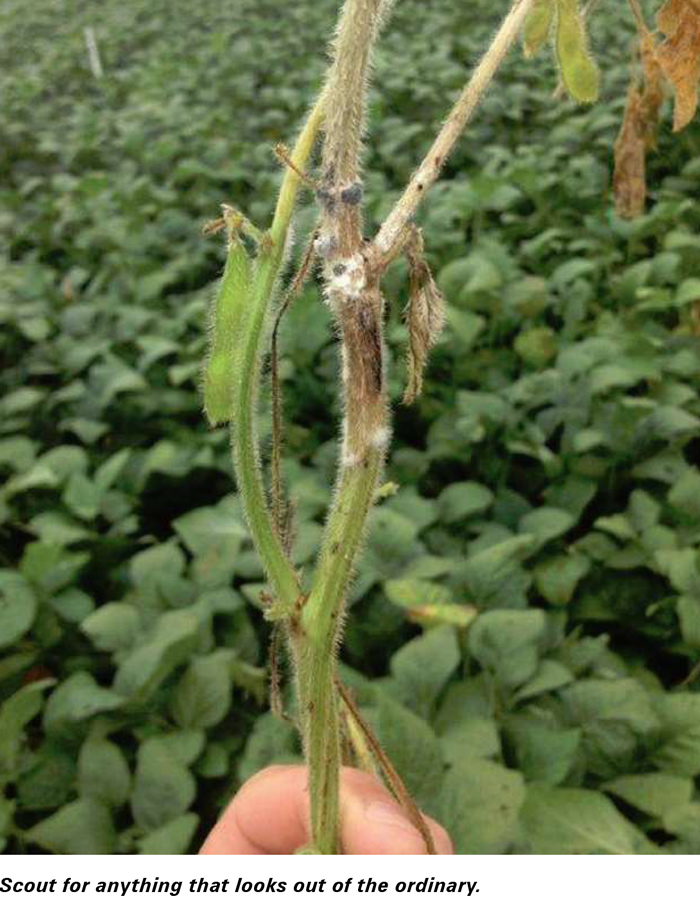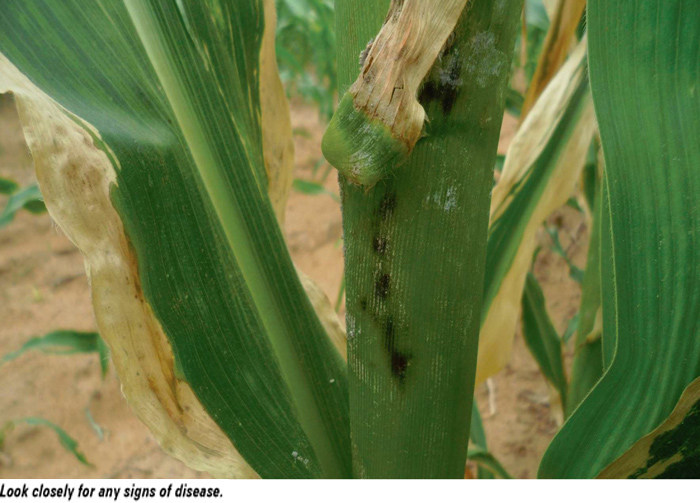January 2020
| Gavin Mathews, Bachelors in Environmental Management. Send an email to gavmat@gmail.com |
 |
Farmers need to make an effort to get out into the field during the growing season. Sometimes we put this off as there are many other things on the go. But the fact of the matter is that early detection of diseases and pests could mean the difference between making a total loss or having a successful year.
Getting your feet dirty in your fields once in a while can be incredibly valuable and may possibly save you from a disaster which may be brewing silently in the leaves of your maize. All growing organisms are susceptible to pests and diseases. All they need is favourable climatic conditions to start their damaging take-over of your crop.
Diseases are caused primarily due to adverse climatic conditions such as too much rainfall, heat and humidity. Too much moisture is not always a good thing; it can lead to fungal and bacterial outbreaks on the leaves and stems of the plant which will consequently lead to decreased production. Fortunately, there are products on the markets which can improve the plants resilience and protect it from diseases.
Thus, it is essential to be on the lookout for the early signs in order to take action. Fungal diseases and bacterial diseases are relatively common but can however be controlled if treated correctly. Viruses also occasionally occur and there are many of them, so it is good to know what you are looking for when scouting your lands. We will briefly discuss a few different diseases from each of these causes and what their symptoms and cures are.

FUNGAL DISEASES
Maize rust
This disease is found worldwide but is most commonly found in areas with high humidity and temperate climates. The rust is most noticeable when the maize plant is reaching tasseling, there are however signs that can be picked up earlier such as small orangey brown, slightly protruding spots on the leaves which will get more prominent as the plant grows. This is a common disease and can be treated with a variety of products, one of the newer popular chemicals being used is Abacus.
Grey leaf spot
This disease will also commonly occur in subtropical and temperate areas with high humidity. Noticeable long lesions will be evident that are grey brown in colour. Within the lesion there will be small spots. This disease will cause leaf loss and later, poor grain-fill.
Stalk rot
Stalk rot develops in hot, humid environments, especially when these conditions are over a prolonged period of time. Maize plants that have this disease will dry prematurely and the stalks will split open. You will also notice dark grey and black discolouration on the lower levels of the stalk. It is important to treat this problem as soon as possible in order to prevent grain loss due to the early drying of the plant.
BACTERIAL DISEASES
Bacterial stalk rot
This is a bacterial pathogen which occurs in areas with high temperatures and high relative humidity. This disease will quickly spread through a plant and kill it. Plants that are infected with the pathogen will have a dark colour at the base of the stalk; much like fungal stalk rot and the plant will usually die shortly after tasseling.
Stewarts Wilt
It is believed that this pathogen is transported by maize flea beetles, therefore make sure that you are using a good pesticide to prevent the disease in your crops. Once a plant is infected you will notice yellowish lesions that run the length of the leaves. The infection will move into the stem and ultimately cause the growth to be stunted, thus wilting will occur, and the plant then dies.
VIRUSES
There are many viruses that can take hold of our maize crops; the best method in dealing with them is being prepared and planting good quality reputable seed from a known source. This will reduce the risk of bringing in foreign seed that may have a genetic flaw or even carry a virus. Many viruses will often have very similar symptoms to fungal and bacterial diseases, thus it is important to get an expert’s opinion when you notice something strange or unusual. Some viruses which occasionally occur in some African countries including South Africa are Mosaic virus, Streak virus, Maize stunt virus and Stripe virus.
The best practice when it comes to managing diseases in maize is observation and monitoring. If a disease is left unnoticed and unattended it can and will cause considerable damage. Pay attention to the climatic conditions. If your crops are forced to endure tough environmental conditions, then they may often break out in some sort of disease which will need your quick attention. If you pick up a lesion or outbreak on some of the leaves in your field and you are not sure what they are, then the first step should be to consult your chemical representative who will be able to advise and guide you on the best course of action to remedy the problem. Make a note of the situation for future reference as it is important that we learn from these situations. The next time you notice the same problem in your maize you will immediately know what to do. Keep your feet dirty.

Publication: January 2020
Section: Pula/Imvula